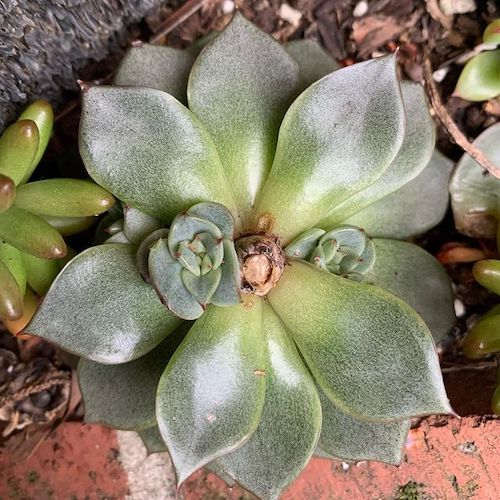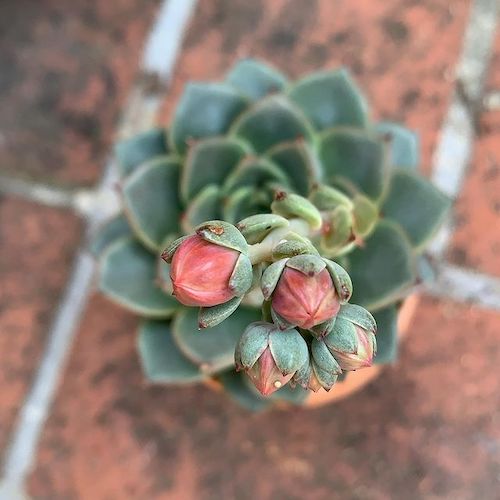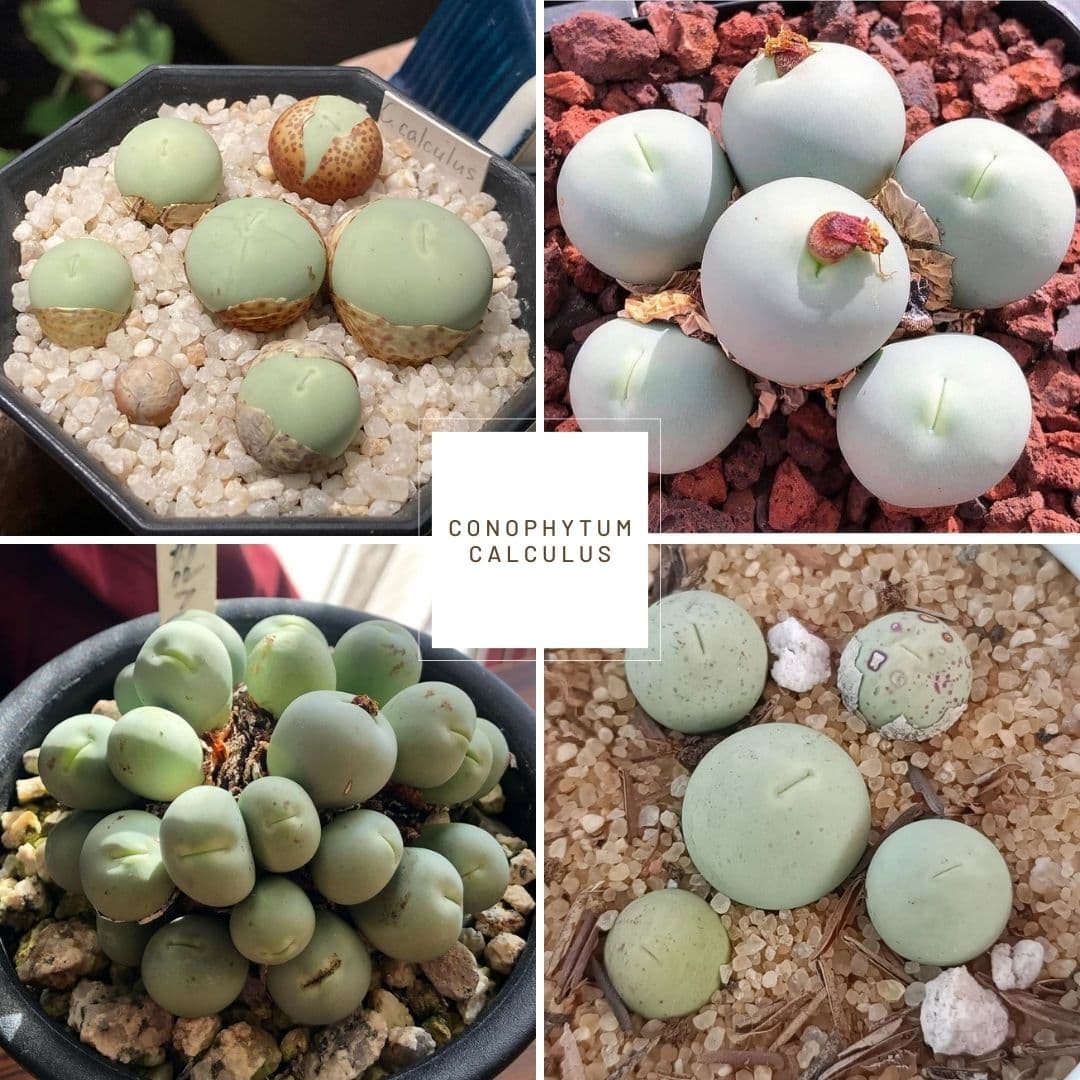Echeveria
Posted by Grace on June 15, 2022
Echeveria is a genus of succulent plants native to Central America and Mexico. They are part of the Crassulaceae family and are prized for their rosette-forming foliage and showy, brightly-colored flowers. With over 150 species and numerous hybrids, Echeveria is a popular choice for succulent enthusiasts and gardeners.
Quick Facts
- Native Habitat: Semi-desert areas of Central America, Mexico 🇲🇽 and northwestern South America
- Family: Crassulaceae
- Water: Watering every 1 to 2 months
- Sunlight: At least 6 hours of direct sunlight per day
Types of Echeveria
Echeveria comes in a wide range of shapes, sizes, and colors, making it a versatile and popular choice for succulent lovers.
Some of the most popular types of Echeveria include:
- Echeveria 'Lola': Compact, rosette-forming with blue-green leaves and bright orange flowers.
- Echeveria 'Black Prince': dark leaves with contrasting, rusty red tips.
- Echeveria 'Dicentra': Compact, rosette-forming with elongated leaves in shades of blue-green and pink.
- Echeveria 'Perle von Nurnberg': Silvery-blue leaves and bright yellow flowers.
- Echeveria 'Fabiola': Fleshy, triangular leaves with a reddish-bronze coloration
 Echeveria 'Perle von Nurnberg' in my garden
Echeveria 'Perle von Nurnberg' in my garden
 Echeveria 'Fabiola'
Echeveria 'Fabiola'
 Echeveria 'Lola' I got from my trip to Los Angeles
Echeveria 'Lola' I got from my trip to Los Angeles
Propagation of Echeveria
Echeveria can be easily propagated by removing offsets or by leaf cuttings.
To propagate by offsets, gently remove the offsets from the mother plant and plant them in well-draining soil.
 Echeveria offsets can be taken off from the mother
Echeveria offsets can be taken off from the mother
 A pup from an Echeveria fabiola offset
A pup from an Echeveria fabiola offset
To propagate by leaf cuttings, it is very important to let a leaf to callus over for a few days, then plant it in well-draining soil. Otherwise, the cutting may rot. Sometimes, I even wait for the roots to come out before putting them in the soil.
 Echeveria leaf cuttings started to root
Echeveria leaf cuttings started to root
Pests and Diseases of Echeveria
Echeveria is generally low-maintenance and pest-free, but it can be susceptible to mealybugs, spider mites, and scale insects.
To prevent pest problems, it is important to maintain clean, well-draining conditions and to avoid overcrowding. If pests are present, they can be treated with an insecticidal soap or neem oil.
Watering Echeveria
Echeveria is drought-tolerant and can withstand long periods without water.
However, it is important to provide adequate water during the growing season to ensure healthy growth and blooming. It is best to water Echeveria thoroughly, then allow the soil to dry out before watering again.
 My Echeveria 'Fabiola' was blooming
My Echeveria 'Fabiola' was blooming
During the winter, it is important to reduce watering to prevent root rot.
Fun Facts about Echeveria
Some species of Echeveria can change color based on the amount of light they receive!
The pigments in the leaves, such as chlorophyll, carotenoids, and anthocyanins, are responsible for the different hues. When the plant is exposed to intense light, it increases production of pigments like carotenoids, which can result in a reddish or orange tint. Conversely, when the plant is in low light, it may produce more anthocyanins, leading to a purple or blue tint. These color changes help the plant regulate its temperature and protect itself from excessive light exposure.






